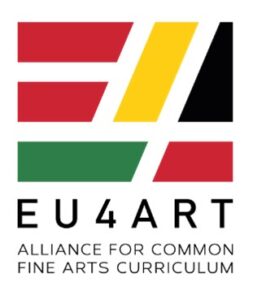
NATURA VIVA
Device created for the exhibition “Surrender” curated by Žanete Liekīte and Elīna Drāke (The Art Academy of Latvia. MA Art History and Theory)
July 7, 2021 at the The Art Academy of Latvia art space “Pilot” (Vāgnera street 3, Riga)
The aim of the exhibition is to create a symbolic space of liberation to address the divisions in current us-and-them society related to identity, gender and sexuality. Believing that art spaces can learn from nightclubs to serve as a catalyst for something that can be interpreted ambiguously – a space that invites us to ‘give up and surrender’, a phenomenon that can be viewed both as a degrading aspect and a place of growth, that can open new horizons and can lead the individual to liberation and closer to discovering their own identity.
The premises of the Art Academy of Latvia gallery “Pilot” will be transformed into a nightclub – an environment where tolerance, acceptance and the different is celebrated. A space dedicated to all deviant, secret, forbidden spaces where marginalised people have sought a refuge from intolerance, hostility and dismissiveness to become a place for new collective experiences. The metaphor of the nightclub can relate to one’s own room, dance floor, apartment, Pride, anywhere like-minded people can ensure the change of rules – freeing an individual from the frame imposed by society, allowing to ‘surrender’ and leading to liberation.
“Natura Viva (Living Nature)” project curated by Sergio Mario Illuminato, Academy of Fine Arts in Rome
Art is capable of reconfiguring the deep sight. Freeing the individual and changing the rules. What is perhaps most needed at this moment to have a creative experience is that three fundamental conditions are re-created:
- an innovative site-specific, outside the borders of museum / institutionalized places;
- an artistic process that identifies the trace of light to follow towards new possible collective experiences, and this means above all illuminating the inextricable mixture of identity and otherness that characterizes every human being;
- a “spect-actor”, that is, an active user, willing not only to receive emotional information, but to perform a cognitive experience.
From these thoughts the process of the proposed double artefact starts indirectly. The one that generates the other to go backword from culture to nature. The process takes place in 5 stages.
The first stage of the “Natura Viva” process initiates a cultural reflection: it wants to restore in the mind the words of Maria Lai: “Art is like a puddle that reflects the sky, but it can go unnoticed. It can be trampled on, but the image of the sky always comes together“.
The device is born from the assembly of the parts of a recovered metal mesh, kept under tension by the wooden frame.
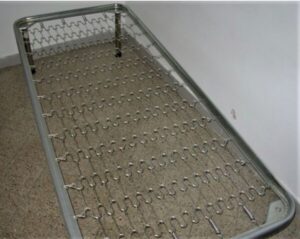
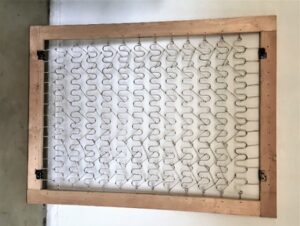
Every straight, curved, undulating line of each mesh of the net is tense, because it meets resistance, because it tries to break through, struggles against friction or comes face to face with necessity, without which the physical world cannot exist.
The shape and size of the frame – together with the mesh – try to re-emerge from the silence usually imposed by the protagonism of the surface of the canvas which in this creation overturns the pictorial activity and allows the unknown to take on a visual body and to the canvas to revert in the background.
The frame will finally be able to reveal itself, first stripping itself with its own blackness and darkness, so that – even after the quantity of colors laid on its surface – the invisible traces of what it was still emerge. Going beyond the limits and horizons of physical matter, the installation would like to project users towards emotional universes.
The canvas subsequently fixed to the frame and to the cage is forced – given its triple size respect to the frame – to different folds to contain itself in those reduced sizes. Pulling just one edge of the canvas out of one of the central links.
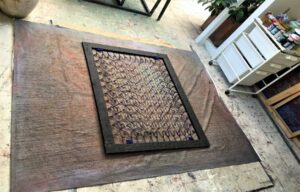
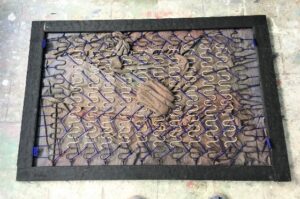
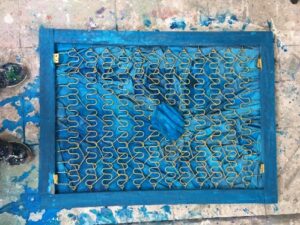
In the process of this artistic exercise, a second life is produced for recycled materials.
Artefact born to be something else for everyday use (bed-frame), in this re-created stage it reveals a double image (front-back), each of which is effective in showing what one is seeing as social, moral change, in time of crisis. From this second life begins the autonomous cycle of art that goes far beyond the artist’s thought.
For this reason, the device, in order to take one more step alongside the sense and meaning given to the work within one of my programmatic enclosures, descends from the wall and must go through the second stage of re-creation, immersed in its new life open to movement and the unexpected. Like a wanderer on the street, he reflects public spaces and degraded urban transformations. It is an opportunity to occupy unusual peripheral areas.
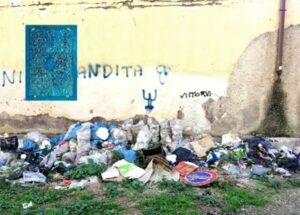
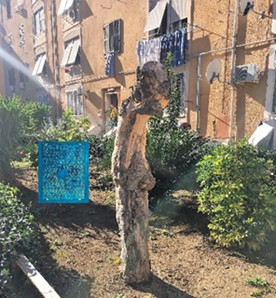

The encrustations or the authentic or false patina, everything in the atmosphere of the street will once again mark the metal-wood-fabric body. In this border between art and life, in the alternation of observations / actions of passers-by, perhaps of love, sometimes of contempt or indifference, the same installation will resume the perennial cycle of erosion and wear of matter and color that will change again as time always changes us.
From this experience, the device is recovered again in the laboratory, as a living form in continuous development.
The third stage concerns the rear part of the painting. Where the canvas has been folded and compressed, the signs and shapes transferred by die onto a different canvas are taken up again. And here some Pathosformel elements seem to form.
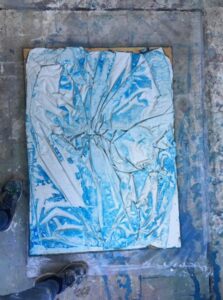
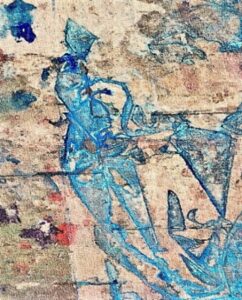
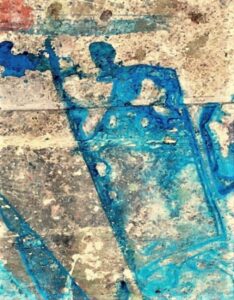
The same forms are plastically incorporated by a mixture of cement and natural soil / oxides that are thrown onto the compressed canvas and left to dry following building techniques.
The single, compact body created in the fourth stage of this process, going through the mirror stage of Lacanian memory in reverse, is shattered to be demoted into fragments to be re-translated into the totality of the bodies recovered on a new canvas.
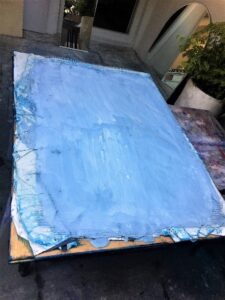
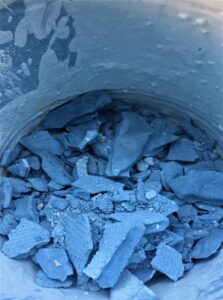
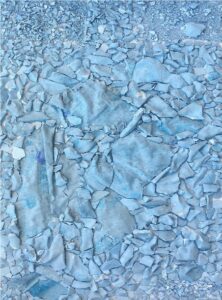
A golden iron texture is imprinted on the cemented form which undergoes a series of oxidations over time.
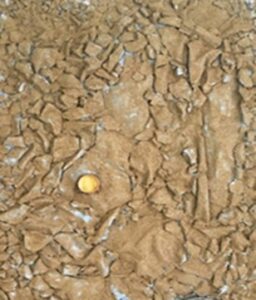
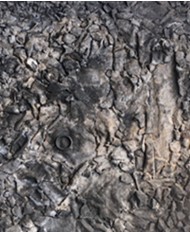
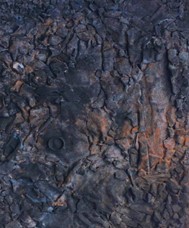
Finally, with the integration of the convex mirror, it will yield to the tradition of oil painting.
To reach the “structuring structure” of the second device “Living Nature”, generated by the first.
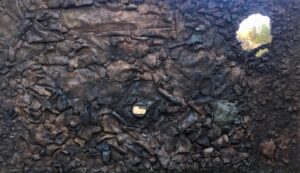
NATURA VIVA
(Living Nature)
Cement, iron, mirror, oil on canvas, 60x100x4
